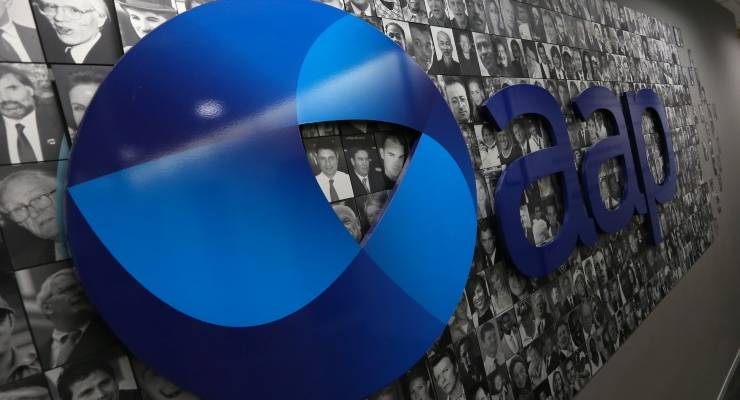
News Corp and Nine killed the backbone of Australian media this week by announcing the axing of Australian Association Press (AAP) — changing the structure and future of Australian journalism forever.
And they’ve justified their cowardly decision as a cost cutting measure.
The closure will leave Australia more deeply reliant on the Murdoch family’s News Corp papers and Sky News — home of right-wing bombast and arrogance — with the more centrist Nine left far behind.
As a result, the only real alternative to the Murdochs’ view of the world will be the neutered ABC (and we all know who is responsible for that ). The shift will put more pressure on the public broadcaster at a time it is bracing for more job cuts to deal with its “indexation freeze”.
The core business of journalism is reporting, analysing and breaking news, which is what the AAP does best.
Australia’s dying legacy media companies have spent years cutting and clashing, while at the same time paying their executives more money, more options and more rewards for underperformance.
These media companies were late to recognise the challenge from the internet. All tried to fight incursions from tech giants like Facebook and Google and all now are in bed with these giants for very little reward.
It’s too late.
Digital advertising, once the golden prize, is falling, and subscription income is only truly working for a few players (The New York Times, the Wall Street Journal, the Financial Times and The Economist offshore; The Australian and The Australian Financial Review here).
Sydney investor and fund manager John Murray is still trying to find buyers for the AAP — senior management asked him to last year — but without success.
Around 600 jobs will go, including between 180 and 200 journalists when the news service closes from June 26. Friendly reports in Nine newspapers claimed 30 to 50 of those jobs would be saved as Nine and News take on staff to expand into areas that the AAP has been covering — regional news, interstate news, courts, Canberra politics and business.
There isn’t a part of everyday Australian business, political cultural life that AAP doesn’t touch at least once a day through its reporting or through its Medianet service, and more recently through its moderating of Facebook fact-check content.
The decision will leave media rivals Seven West Media and Australian Community Media, who used AAP services, stranded.
Both organisations are shareholders in AAP and both were silent on Tuesday as News and Nine took the running. Their costs will rise because they will have to find ways of replacing the AAP news products, such as the service to TV and radio stations known inside AAP as “rip and read”. This is going to reverberate across regional and metro radio.
Then there’s Network Ten, radio networks owned by Southern Cross and HT&E, WIN, businesses, governments and their departments, religious and cultural organisations, unions, and investors such as super funds and stockbrokers.
Nine last week revealed plans for $100 million in cost cuts over the next three years (with much of those savings coming from TV and soon, no doubt, from formerly-Fairfax newsrooms).
News Corp has a continuing cost-cutting regime at its Australian newspapers and last year chopped a number of high profile names from The Australian. It is likely paying out millions of dollars a year in redundancy costs in Australia, the UK and US.
How can we take seriously the obvious contradiction that Nine and News are going to save money by cutting funding to AAP, ending 85 years of journalism, without harming the quality of Australian news coverage?
How long will the AAP journalists taken on by News and Nine keep their jobs as both organisations eye more cuts?
For the saving of $15 million a year, Nine and Fairfax are going to have to add to their cost-base by employing journalists and finding ways to set up and replace what AAP was providing.
The savings will prove to be illusory, and the staff hired will be slowly released back into the wild.
AAP has bureaus in all states and territories of Australia. It maintains correspondents in New Zealand, London and Los Angeles and has contributors in the US, Europe, Asia and Africa.
Its domestic news coverage is complemented by alliances with the major international news agencies including Associated Press. It still has close links with Reuters which was one of its early shareholders. Associated Press in the US licenses news text and photo services to AAP for redistribution into the Australian media market. AP is also contracted to use AAP text and photos.
All this coverage will not be replaced by News or Nine because it will be too costly, and the duo have already axed most of their interstate and overseas bureaus and outsourced coverage to — guess who — AAP.
The final irony is that AAP was started in 1935 (during the Great Depression) by newspaper publisher Keith Murdoch, father of Rupert, when he was running The Herald and Weekly Times.
Now his son has helped kill it off.








With our support, commercial media can live on. Newspapers and commercial TV channels were primarily paid for by their advertisers. Since the advertisers extracted more money from readers they tempted than they paid the media, why don’t we just cut out the middleman? That does mean that we pay the media more than we used to, and buy somewhat less junk from the advertisers. Heck, seeing that a large fraction of our incomes are spent buying junk of little more value than keeping up with the Joneses, that “somewhat less” can still be one hell of a lot.
Let’s each of us pay for several subscriptions and be proud that it is us, not advertisers, who are buying editorial policy. Our social chatter will be that much more wised-up than the Joneses’ anyway.
Hear hear, an excellent post.